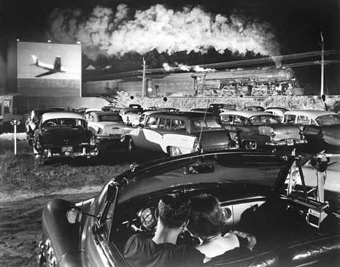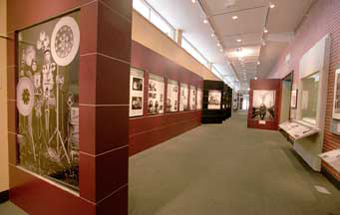The Twilight of Steam
A new museum houses a master’s photographs of how the technology that built America ended

(COURTESY OF THE O. WINSTON LINK MUSEUM)
Between 1955 and 1960, O. Winston Link made 21 self-financed trips to Maryland, Virginia, West Virginia, and North Carolina to photograph the Norfolk & Western Railway before it became the last major railroad in America to convert from steam to diesel. The 2,500 pictures he took captured more than the remnants of a dying technology; they also memorialized its place in the routine of rural life and the sentiments toward it, ranging from tolerance to awe, that were exhibited in the people it passed. Although Link’s photographs were known among railroad enthusiasts, none were exhibited until the 1980s, and even after that, only one gallery owned more than a couple of his most famous shots.

(COURTESY OF THE O. WINSTON LINK MUSEUM)
But in January of this year his work was finally given a permanent home, the O. Winston Link Museum, at the renovated Norfolk & Western passenger station in Roanoke, Virginia. Train aficionados will be pleased by the museum’s collection of railroad paraphernalia, and visitors can also stand in the station’s sleek Raymond Loewy–designed grand lobby—with its schedule board still on the wall, arranged exactly as it was when Link photographed himself with it—and look through the picture windows at the Norfolk Southern freight trains pounding by.
The museum was very nearly doomed a decade before planning began. In the early 1990s Link’s second wife stole notebooks and equipment from the frail and elderly photographer and forced him to make prints, which she stole and later sold illegally for her own profit. His wife was found guilty of abuse and theft in civil and criminal courts, but she retained hundreds of the stolen prints and artifacts and did not produce them until this March, in a plea bargain to settle further criminal charges against her. If Link had not had the foresight to secure his negatives in a safe-deposit box, there likely would have been nothing to fill the museum.
Before he died in 2001, the Brooklyn-born Link chose Roanoke as the site for his museum because the locals’ respect and appreciation for his task had turned him into a folk legend in the area. “I would have lived there the rest of my life—it was gorgeous,” he said. And, in a way, he does. As Ken Citarella, the district attorney who prosecuted the first case against Link’s wife, explained, “If he had no museum, Winston would live in 20 different galleries all over the country. Now he has a place his spirit can live in.”
